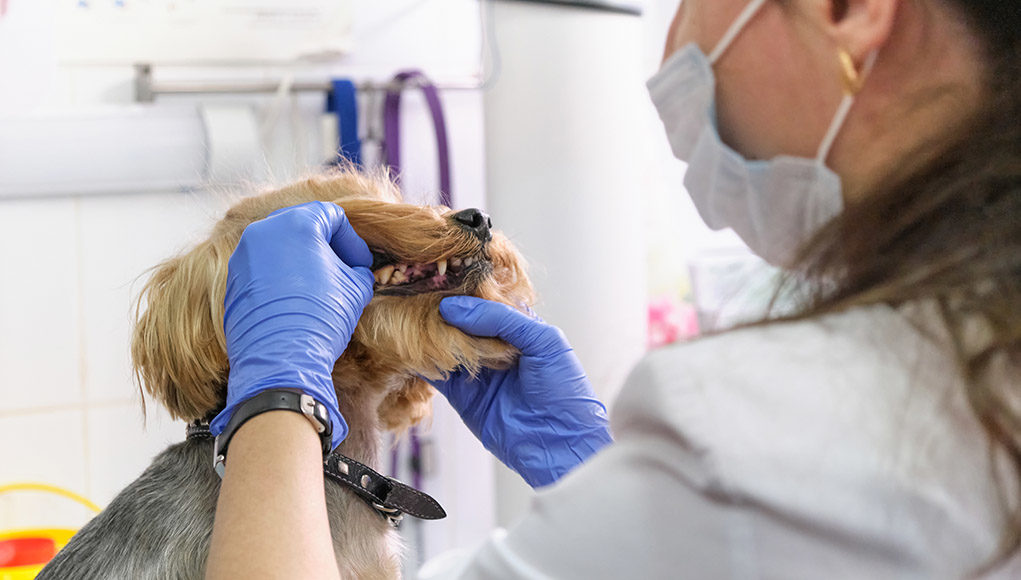Table of Contents
When your dog has dental disease, it can lead to tooth extraction, just like us humans. If it leads to that, here, you will learn what you can do for a dog tooth extraction recovery?
Recovery depends on your dog's dental health. Your vet will require your pup to undergo a complete dental evaluation.
Dog dental extraction is one of the most common veterinary surgeries. But this is not something that you should take lightly.
Dog dental care and recovery are crucial for canine tooth extraction. It can lessen the risks of other complications like possible infections. It can affect the dog's tooth extraction recovery time.
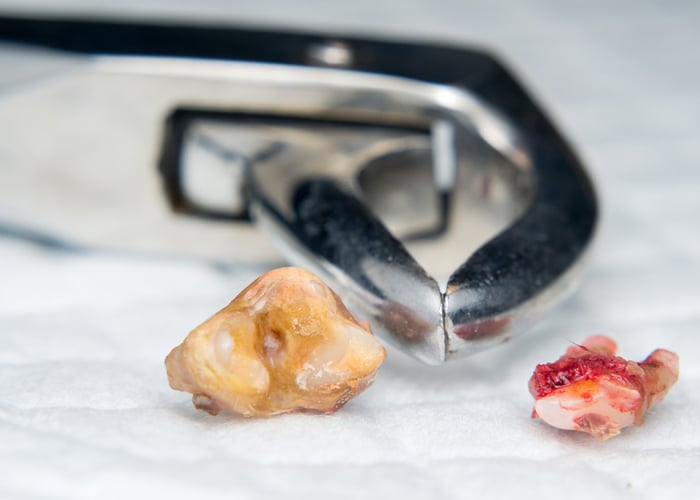
Dog Tooth Extraction and Reasons Why It's Done
Dog tooth extraction recovery will depend on why these teeth are getting extracted. Here are a few issues why:
Periodontal Disease
One of the primary reasons for a dog dental extraction is periodontal disease, also known as severe gum disease. This is a prevalent disease in dogs, especially senior or older dogs.
In periodontal disease, the bacteria infects and weakens the periodontal ligaments. These ligaments are the bits of tissue that connect each tooth to its underlying bone.
When this attachment is weakened, the infection can go deeper, creating abscesses or other infections between the tooth and bone. The tooth will eventually lose its bony anchor and become loose if this happens.
In this case, dog dental extraction is critical. A dog will finally have relief from infection once the diseased tooth is removed and the area is adequately cleaned.
These diseases are not only risking your dog's dental health. It can also infect major organ systems if the bacteria enter the bloodstream.
Broken Tooth
A broken tooth in dogs is also a common dental problem. If the fractured tooth is healthy, it can still cause pain because of the exposed nerves.
Tooth extraction is not always necessary for a broken tooth. Veterinary dentists can perform root canal therapy to correct the issue in some cases.
Tooth extraction is required in a broken tooth when the fractured tooth and the gum tissues surrounding it are unhealthy and unrepairable.
Unfortunately, the removal procedure for large dogs and chewing teeth is comparable to removing an impacted wisdom tooth in humans.
Unerupted Tooth
With this tooth complication, it is also recommended for tooth extraction, according to the Merck Veterinary Manual. Unerupted teeth are teeth that remain under the gum line.
Dogs that fall into the Brachycephalic breeds or dogs with short-muzzled flattened faces are more prone to this condition.
Examples of these dog breeds are Pugs, Maltese, Pekingese, English Bulldog, French Bulldog, and Boston Terriers.
Tooth Decay
Tooth decay can happen in dogs, but it's not as common as its owners. It only occurs in 10% of dogs. Vets can correct it by filling the cavity. If the tooth decay becomes too severe, tooth extraction may be necessary.
One effective home remedy for tooth decay is daily brushing, especially on the chewing areas in the back of the mouth.
You can also try using tartar-removing chew toys or dog dental treats.
Dog Tooth Extraction and How It's Done
Remember that not all dog dental extractions are the same. Every tooth has its unique challenges.
Some teeth are very loose and can easily be extracted in one motion. However, other causes can be more complicated and require more extensive surgery.
The procedures for canine dental extraction:
- Clean all the teeth and gums
- The vet will conduct an X-ray of the affected areas or the whole mouth if needed.
- Select the correct tooth or teeth that need to be extracted
- Injection of a local anesthetic to numb the area
- Surgically create flaps in nearby tissue
- Drill tooth to isolate roots and break down attaching ligaments
- Clean the space between the teeth and gums
- X-ray to make sure all bits of the root have been removed
- Stitch the flaps closed
- Your vet may apply a sealant to the tooth and prescribe an antibiotic and pain reliever.
Dog Tooth Extraction Complications
There can be multiple complications if you don't take proper care of your pup after the dog tooth extraction. That's why a good recovery plan is advised.
If the aftercare is not good, you may notice a foul odor in your dog's mouth. Not only that, your dog can refuse to eat and become inactive.
Improper care can lead to infection and swelling on the lower or upper jawline. If you see these symptoms after the extraction, it is best advised to consult with your vet.
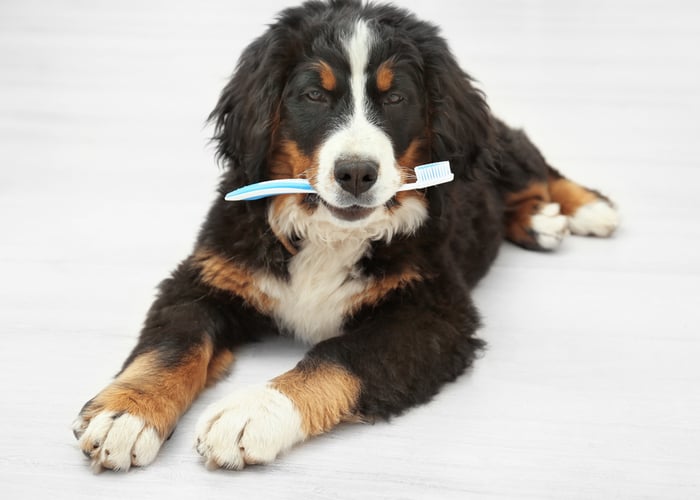
Dog Tooth Extraction Recovery and Care
Proper Medication (Antibiotics & Pain Relievers)
Most likely, your vet will prescribe you a list of antibiotics or pain relievers needed after the surgery. Discuss pain relief administration with your veterinary dentist before going home.
Follow your vet's instructions throughout as they know what's best for your dog. Contact them if your dog is refusing to take its pain relief medication.
Remember that you should follow your vet's recommended dose for pain relievers because that stuff is strong. The same goes for antibiotics.
Antibiotics are excellent to help reduce the chances of infection in the surgical area.
Rest and Exercise
It is best to have the environment quiet, warm, and comfortable for your dog when you get home. This will help with the healing process.
It can take a few hours for your pet to recover from the anesthetic, but it can take 24-48 hours to recover fully. In this stage, your pup will feel drowsy, which can result in a lack of appetite.
If these signs continue after 24 hours, it is best to call your vet.
Once your dog gets over the grogginess, their activity level will come back to normal. However, it would be best to lessen their physical activity still.
Light exercise and gentle play are fine. But don't let your pup do physically demanding activities.
Feeding Your Dog After a Tooth Extraction
Make sure that you ask or consult with your vet about postoperative feedings. Usually, your dog will need a small meal two hours after the surgery.
Their next meals will depend on the type of procedure that was one. For instance, your pup should avoid hard kibble and treats for a few days until the correct level of healing has occurred.
If you have no choice, you can use water to soften the kibble. You can also feed them canned food.
In some cases, dogs need a liquid diet for a prescribed amount of time. It is also essential to encourage your dog to drink water as frequently as possible because water is vital to healing.
Check for Signs of Postoperative Complications
After your pet has recovered from the anesthesia and is getting back slowly to their proper diet, it is still essential to monitor them if some infection happens.
Most pets will not show any signs of pain. It is your job to keep a close eye on them. Here are some subtle signs of distress to look for after dog dental extractions:
- Dropping food while eating
- Choosing not to eat hard food like kibble
- Disinterest in chew-toys
- Aggressive behavior when you touch their face or mouth
- Excessive drooling
- Swelling or bleeding around the wound area
- Drainage from the eyes or swelling around the eyes
Dog Tooth Extraction Healing Time
Most of the healing is in the first 2 weeks. This is where it's recommended to feed your dog a soft food diet. Avoid chewing bones and tooth brushing.
Your dog will recover to its former activity level and appetite after 48 to 72 hours. However, the healing time for the incision site to fully heal and the stitches to be absorbed takes two weeks.
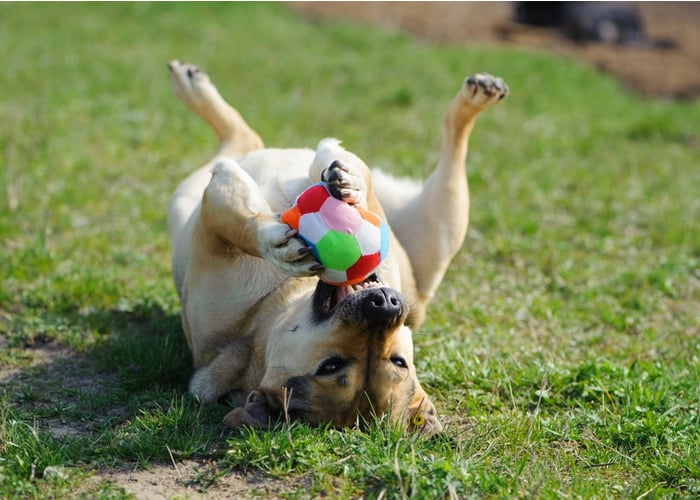
Senior Dog Tooth Extraction Prevent Dental Disease
Senior dog tooth extraction is the most common, primarily due to dental disease. There are many ways to prevent dog dental disease in senior dogs, and it's never too late.
Your vet can recommend these things depending on your dog's oral health. Ask your vet for their recommendations, given your dog's age and health.
Here are a few things we recommend you try to improve your dog's dental health
- Dog Dental Chews
- Mouth Rinsing
- Toothbrushing
- Water Additives
READ MORE HERE: Common Health Problems of Senior Dogs
Frequently Asked Questions
Can dogs live without teeth?
It might be surprising to some, but yes, dogs can live without teeth. However, it will take some time to adjust and the proper extra care so that they can live with no teeth.
In some cases, dogs that are living with teeth can cause pain. That's why the solution is taking all of the teeth. A dog with no teeth is better than a dog with rotten teeth.
If this ever happens to your dogs, you'll be needed to feed them soft foods. A great option is switching to canned dog food or dog foods with gravy in them.
How Much Does A Dog Tooth Extraction Cost?
The prices for a dog tooth extraction can differ widely. It can depend on the tooth that needs to be pulled out.
For instance, a simple non-surgical incisor extraction can cost $10 only. However, a problematic dog tooth extraction will require a suture and nerve block that will cost up to $150.
But these problematic extractions don't stop there. Your dog will be needing an x-ray to make sure that the entire tooth has been pulled.
Usually, the price for a single post-extraction x-ray ranges between $50 to $100. But not all vet clinics have them, so it's important to ask beforehand.
After that, your vet will prescribe some antibiotics and pain relievers that will cost around $30 to $90 for normal healthy dogs.
Is it normal for a dog to bleed after tooth extraction?
Yes, some bleeding is expected after the dental extraction. But You should report heavy bleeding to the vet immediately.
It is your job to make sure that your dog doesn't chew on anything hard or sharp as it can trigger bleeding or the incision to re-open.
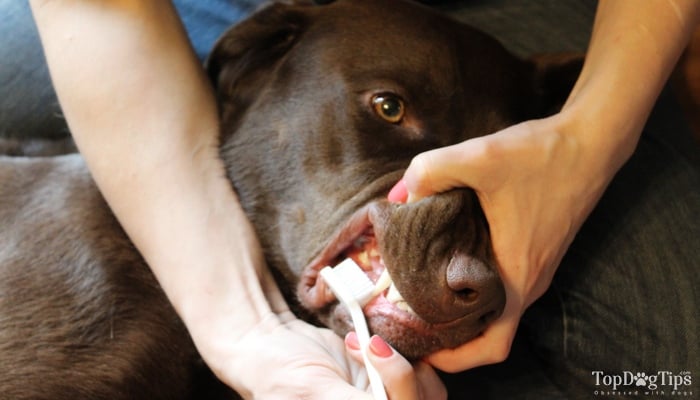
Dog Tooth Extraction Recovery Conclusion
When it comes to dog tooth extraction recovery, there are plenty of ways to take care of your dog. It's important to let your pup rest. Let them relax for as long as they need.
Make sure that they'll get the adequately prescribed medications. You can also help your dog by softening up their meals. Provide soft mushy food instead of hard kibble.
Monitor their wound and minimize their physical activities. Keep an eye on other postoperative complications.
Dogtooth extraction healing time will usually take up to 2 weeks. Your dog will be able to go back to its normal activities and appetite after two to three days.
READ NEXT: TOP #83: THE IMPORTANCE OF DENTAL HEALTH FOR DOGS


